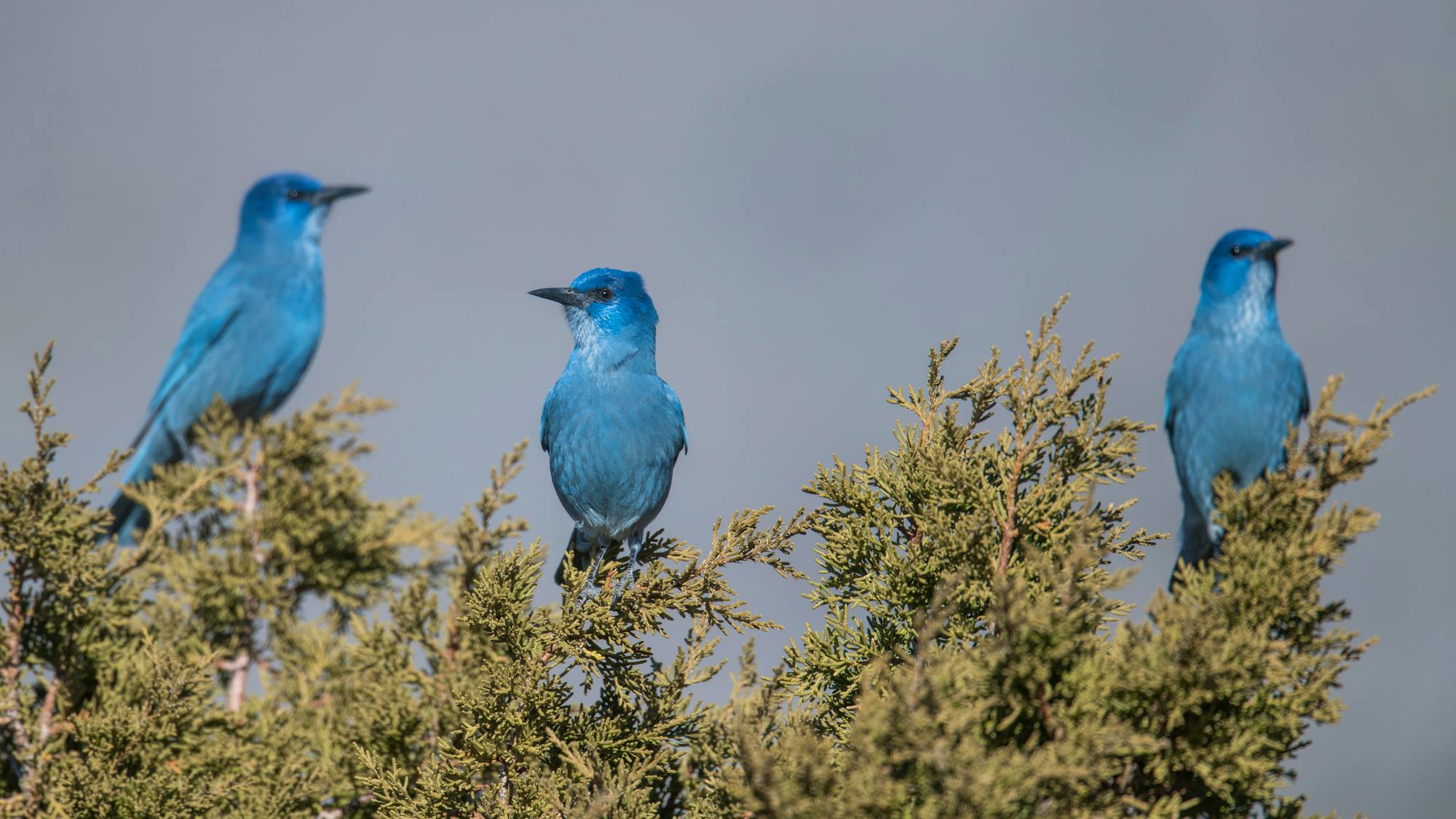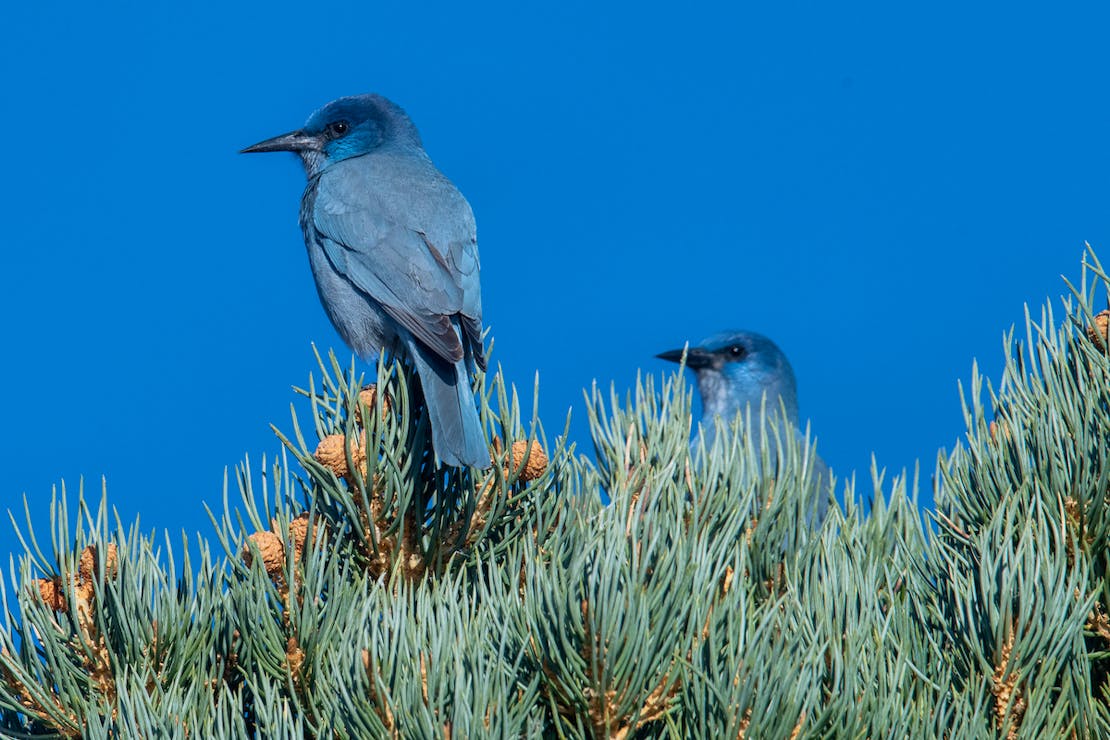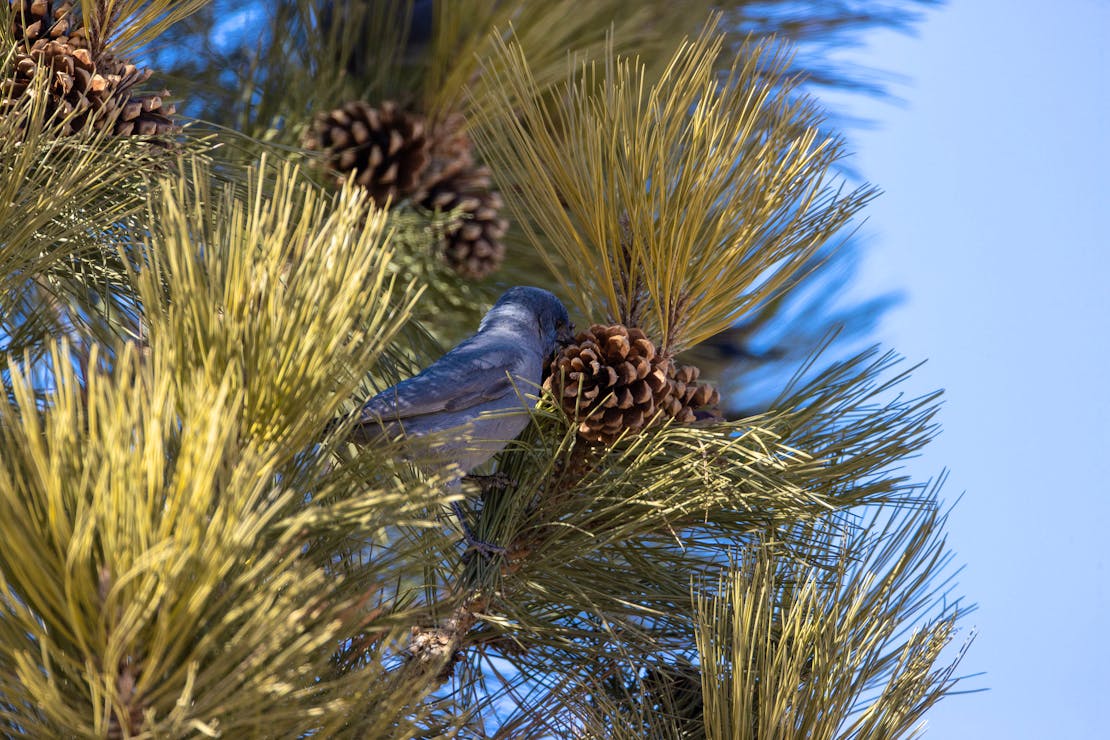Alarmed by the pinyon jay’s precipitous decline, Defenders submitted a petition in April 2022 to the U.S. Fish and Wildlife Service seeking Endangered Species Act protection for this iconic bird — before it is too late. The ESA imposes a strict, 12-month deadline for FWS to respond to a petition like Defenders’, which asks FWS to “list” the species as endangered or threatened under the ESA. That time-limit reflects the urgency inherent in a listing petition. And, as Defenders explained in the petition, the pinyon jay’s situation is undisputedly dire. The most current information shows the species has declined dramatically — by more than 80% according to some estimates — and we could lose up to 50% of the already-decimated global population by 2035.1 Indeed, a FWS staff member themself stated in an internal email that it “seems very possible” we could lose another 50% or more of the global population by the end of the century.2 FWS’ deadline to make a final determination in response to the petition ran on April 25, 2023. Still, FWS plans to delay its overdue decision another several years past the ESA’s deadline — until at least FY2028.3 Its response illustrates the agency’s ongoing need for funding, but also calls into question whether other factors play a role in delaying its decision.
Listing represents a vital threshold step on which the rest of the ESA’s protections hinge. The statute serves “to provide a program” and a “means” of conserving endangered and threatened species and the ecosystems on which they depend. 16 U.S.C. § 1531(b). As such, to benefit from its protections, a plant or animal must be one determined to qualify for “endangered” or “threatened” status. Only those species that cross the listing threshold receive the benefits and protections of the ESA.
Given listing’s import, “Congress from the outset recognized” timeliness in the process as “essential.” Biodiversity Legal Found. v. Badgley, 309 F.3d 1166, 1175 (9th Cir. 2002). Thereafter, concerned that species “had languished” in limbo for years, it passed amendments to the statute in 1982 specifically to speed the process. See id. (internal quotation marks omitted).
Thus, Section 4 of the ESA requires FWS, to the maximum extent practicable, to “make a finding as to whether” a listing petition like Defenders’ “presents substantial scientific or commercial information indicating that the petitioned action may be warranted” within 90 days of receipt. 16 U.S.C. § 1533(b)(3)(A). Whether or not it meets the 90-day deadline, FWS must make a final determination on such a petition within 12 months of the petition date. Id. § 1533(b)(3)(B).
In practice, however, the agency has a lengthy backlog and defers decisions for years on end. FWS annually publishes a “National Listing Workplan” (“Workplan”) showing anticipated determinations at least five years out, in order of agency priority.4 To aid in that endeavor, it has promulgated a non-binding “Methodology for Prioritizing Status Reviews and Accompanying 12-Month Findings on Petitions for Listing Under the Endangered Species Act” to serve as a “tool,” alongside other considerations, for working through backlogged decisions. See 81 Fed. Reg. 49248 (July 27, 2016).
FWS blames its delay, and use of the Workplan, on resource constraints. It is true that Congress consistently underfunds FWS’s ESA implementation. Defenders has written extensively about this issue5 and continues to advocate for much-needed resources to implement the statute.
On top of any budget restrictions, however, FWS’s response to Defenders’ petition showed a startling lack of urgency. After taking more than fifteen months to make its “90-day” finding on the pinyon jay,6 FWS turned to soliciting input about outstanding studies to decide when it would consider the final determination “due”7 (notwithstanding the mandatory, and long-past, statutory due date). A staff member described that inquiry as an effort to see “how far down the road we can kick” the decision.8 Anticipating (correctly) that FWS would punt until FY2028, staff further decided not to even start work on the determination until FY2026, or FY20259 at the earliest.10
After Defenders wrote FWS urging it to prioritize its overdue response to the petition, FWS blamed “reduced staffing” in its Utah field office for delay. Internal emails, however, show that the Utah field office volunteered to take the lead on the determination after discussing internal “interest [in] being able to control the process.”11 In doing so, the Utah field office candidly disclosed that it lacked the staff to take on this role and would “need SIGNIFICANT assistance” from other parts of the agency.12 After a Colorado-based staff member supported the idea due to Utah’s location within the pinyon jay range, FWS ultimately allowed that office to take the lead.13 If the Utah field office lacked the resources to comply with the statute, it had no obligation to volunteer. Further, FWS could have considered whether other offices had a lower listing workload. It could also have taken into account that, as Defenders learned through experience seeking to work collaboratively on behalf of the bird, FWS’s leading pinyon jay experts are based in other states (New Mexico and Nevada), while the FWS chair of the Pinyon Jay Working Group operates out of Colorado. This is understandable, as pinyon jay population density is greatest in New Mexico and Nevada, which collectively are home to almost sixty percent of the remaining pinyon jays.14
FWS’s 2016 methodology recognizes that the responsibility for listing decisions may not be equally distributed among offices. In particular, it explains that priority determinations could be “clustered in a geographic area,” overwhelming the local subject matter experts and requiring the agency to further delay its determination. 81 Fed. Reg. at 49249-50. It is not clear, however, to what extent the agency has contemplated the converse. If a species’ range spans multiple states or regions, could it make a faster determination by assigning the lead role to a less-burdened subject matter expert or office?
Amidst an unprecedented biodiversity crisis,15 FWS cannot afford a lackadaisical approach to listing decisions. Additionally, by moving quickly to preserve the pinyon jay, FWS has the opportunity to benefit a range of other plants and animals. As Defenders has discussed extensively elsewhere, the pinyon jay plays an important role in maintaining the biodiversity of the West.16 Pinyon jays have a mutualistic, symbiotic relationship with the piñon pine.17 In effect, loss of this species poses risks to the functioning of an entire ecosystem — including other species it supports.18 By contrast, preserving the pinyon jay may help FWS avoid the need to make future listing determinations down the line.19
1Pinyon Jay Working Group - Partners in Flight
2Defenders obtained the internal correspondence referenced in this blog through a Freedom of Information Act (“FOIA”) request.
3 National Domestic Listing Workplan Fiscal Years 2024-2028 (fws.gov)
4 National Listing Workplan | U.S. Fish & Wildlife Service (fws.gov). The Workplan pertains only to domestic species. FWS maintains a separate Foreign Species Listing Workplan as well. See Foreign Species Listing Workplan | U.S. Fish & Wildlife Service (fws.gov)
5See, e.g., Congress Urged to Spend $857 Million to Fully Fund Endangered Species Protection | Defenders of Wildlife
6See Endangered and Threatened Wildlife and Plants; 90-Day Findings for Five Species, 88 Fed. Reg. 55991 (Aug. 17, 2023).
7Email correspondence obtained through FOIA.
8Email correspondence obtained through FOIA.
9In a letter to Defenders, FWS also stated that it plans “to begin formally developing the SSA in FY25” to maintain its projected timeline.
10Email correspondence obtained through FOIA.
11Email correspondence obtained through FOIA.
12Id. (emphasis in original).
13Email correspondence obtained through FOIA.
14https://pif.birdconservancy.org/population-estimate-database-scores/
15Drivers of the Biodiversity Crisis: America at a Crossroads | Defenders of Wildlife; Why Biodiversity Matters | Defenders of Wildlife; New Defenders Report Shows Locations in the United States Most Impacted by Biodiversity Crisis | Defenders of Wildlife
16Feds Agree Pinyon Jay to be Considered for Endangered Species List | Defenders of Wildlife
17Pinyon jays & piñon pines - New Mexico Wildlife magazine (state.nm.us); Feds Agree Pinyon Jay to be Considered for Endangered Species List | Defenders of Wildlife
18See, e.g., The Pinyon Jay's Plight • The Revelator (quoting Peggy Darr, Defenders of Wildlife).
19See, e.g., Protecting One to Benefit Many (arcgis.com)
From the Blog











Follow Defenders of Wildlife
facebook bluesky twitter instagram youtube tiktok threads linkedin